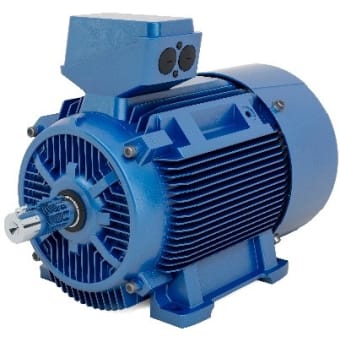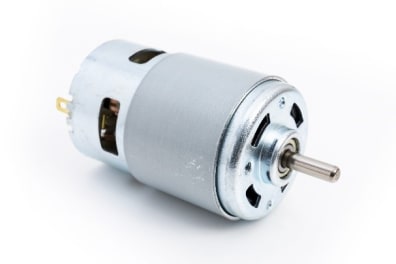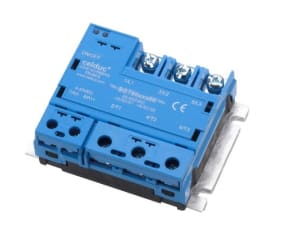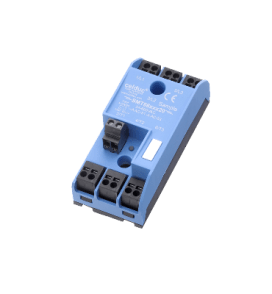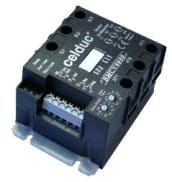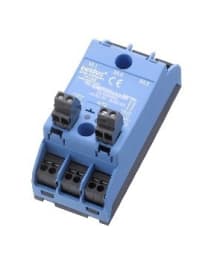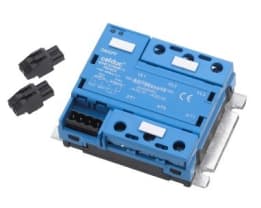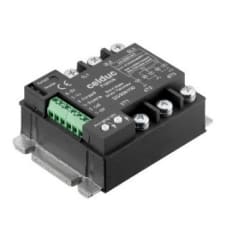Solid State Relays : An effective solution for Motor Control
Follow articleHow do you feel about this article? Help us to provide better content for you.
Thank you! Your feedback has been received.
There was a problem submitting your feedback, please try again later.
What do you think of this article?
Solid State Relays: An effective solution for Motor Control
Motor control is usually hard to deal with, as a motor is an inductive load with lots of high starting currents (increasing the cost of protection devices) and overvoltages generated during turn-off.
Indeed, there are drawbacks when direct starting a motor:
- High inrush current: Heat, flicker risks, energy and installation costs
- Noise, arcs: Short control lifetime and high maintenance costs
- High transient torque: Excessive wear of the coupling parts leading to maintenance costs
All of these disadvantages can lead to quality problems during production.
Thanks to their size and high adaptability, solid state relays are more and more popular to control motor loads.
One of the main advantages of using power electronics is that the numerous control modes can easily perform thanks to very fast response time, and computing power of microprocessors.
Types of electrical motors
 Alternative current motors
Alternative current motors
AC motors are the most used. They are powered by an alternating current that converts the electricity in order to get a rotative mechanical movement.
There are different types of AC motors:
- Squirrel cage motors
- Wound motors
- Synchronous motors
- Traction motors
AC motors represent a lot of advantages:
- Low power required for start-up
- Controlled acceleration
- Speed control
- Controlled starting current
- The customizability of torque requirements
- Decrease the power line disturbance
 Direct current motors
Direct current motors
DC motors have a more specific use, for instance for boats or machines needing high-speed rotation.
There are different types of DC motors :
- Shunt motors
- Separate excitation motors
- Series DC motors
The main advantage of DC motors is that it is easy to set up and control their speed. Nevertheless, DC motors tend to wear quickly and can generate a lot of noise.
Types of Solid State Relays for motor control
Three-phase ON/OFF solid state relays
ON/OFF solid state relays are often available in zero cross and random versions. They can only work in a binary way (on or off). Reliable and efficient, ON/OFF SSR ranges are the perfect choice for industrial motor control. Indeed, ON/OFF SSRs have been elaborated to handle very frequent start and stops of three-phase motors.
Soft Starter
A soft starter limits the inrush current and increases the life expectancy of the mechanical pieces. It then allows to softly start the motor, and reduce the starting current, limiting the peak energy demand.
Soft starters are available in single-phase and three-phase versions.
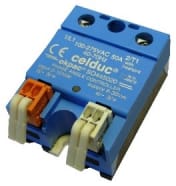
Motor inverters
Rotation inversion is often used to effectively change the load rotation movement, or for counter-current braking. It is then needed to use a device to limit the torque and current overload. Inverters are then to the optimal solution for this type of use.
Solid State relays advantages
 A very high life expectancy
A very high life expectancy
Solid state relays do not have any moving mechanical parts so they are not subject to any contact failure, mechanical strain or corrosion. A solid-state relay has an average lifespan of millions of cycles with no deterioration in performance.
Nevertheless, in order to benefit from a solid state relay’s infinite lifespan, it is highly recommended to use heatsinks in order to help the solid state relay to evacuate the heat generated by its use, and then avoid any overheating that could lead to serious damage.
 A low energy consumption
A low energy consumption
Solid state relays required very low currents to switch high power loads. Since SSRs do not have to energize a coil and physically open and close contacts, they actually consume 75% less power than electromechanical relays.
 Silent operation
Silent operation
SSR technology uses electronic circuits to provide switching, meaning SSRs make no acoustical noise. This is a highly needed feature in medical applications for instance.
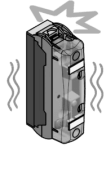 Resistant to shocks and vibrations
Resistant to shocks and vibrations
As SSRs have no moving parts and are entirely enclosed in a housing, they are well-suited for harsh environment applications. This makes them highly efficient in industries with harsh environments, such as the railway industry.
 A very high switching frequency
A very high switching frequency
Solid State Relays switch on and off faster than electromechanical relays. Power to a load then can be applied and removed very quickly and precisely.
 Various control types and diagnostics functions
Various control types and diagnostics functions
Solid State Relays offer different types of controls (specific choice of switching time) and possible diagnostic features.
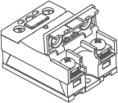 Various mounting configurations
Various mounting configurations
Solid State Relays are available in different housings (Hockey-Puck, 25 mm, PCB), meaning they adapt to various types of mounting (DIN rail, PCB, panel mount).
celduc® relais has developed specific solid state relays for motor control. celduc® SSR manufacturing is 100% based in France, which guarantees quality and reliability for each product.



